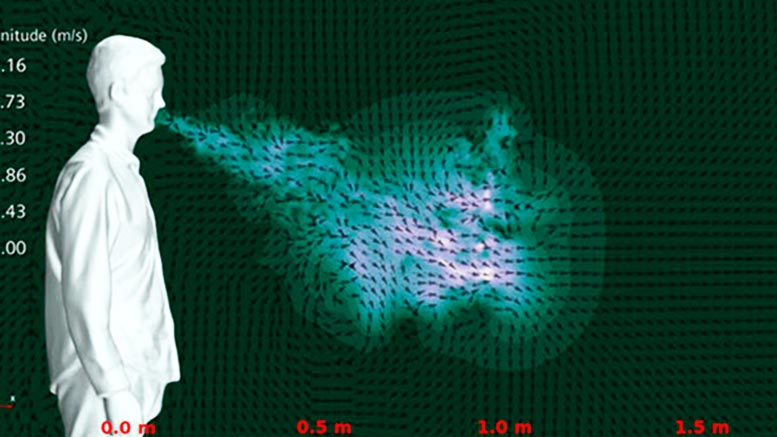
But when people’s noses are congested, the area that the sneeze can exit is restricted, thus causing sneeze droplets expelled from the mouth to increase in velocity.
So, if you see someone without teeth, you can actually expect a weaker jet from the sneeze from them.”.
To perform the study, the researchers used 3D modeling and numerical simulations to recreate four mouth and nose types: a person with teeth and a clear nose; a person with no teeth and a clear nose; a person with no teeth and a congested nose; and a person with teeth and a congested nose.When they simulated sneezes in the different models, they found that the spray distance of droplets expelled when a person has a congested nose and a full set of teeth is about 60 percent greater than when they do not.The results indicate that when someone keeps their nose clear, such as by blowing it into a tissue, that they could be reducing the distance their germs travel.The work ties back to the researchers’ project to create a COVID-19 cough drop that would give people thicker saliva to reduce the distance droplets from a sneeze or cough would travel, and thus decrease disease-transmission likelihood.The findings yield novel insight into variability of exposure distance and indicate how physiological factors affect transmissibility rates, says Kareem Ahmed, an associate professor in UCF’s Department of Mechanical and Aerospace Engineering and study co-author.Study co-authors were Douglas Fontes, a postdoctoral researcher with the Florida Space Institute and the study’s lead author, and Jonathan Reyes, a postdoctoral researcher in UCF’s Department of Mechanical and Aerospace Engineering.Kinzel received his doctorate in aerospace engineering from Pennsylvania State University and joined UCF in 2018.In addition to being a member of UCF’s Department of Mechanical and Aerospace engineering, a part of UCF’s College of Engineering and Computer Science, he also works with UCF’s Center for Advanced Turbomachinery and Energy Research.
Ahmed is an associate professor in UCF’s Department of Mechanical and Aerospace Engineering, a faculty member of the Center for Advanced Turbomachinery and Energy Research, and the Florida Center for Advanced Aero-Propulsion.He earned his doctoral degree in mechanical engineering from the State University of New York at Buffalo.